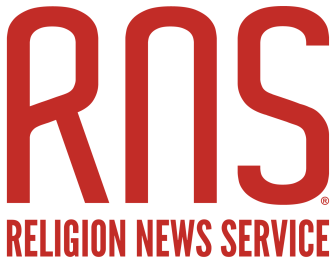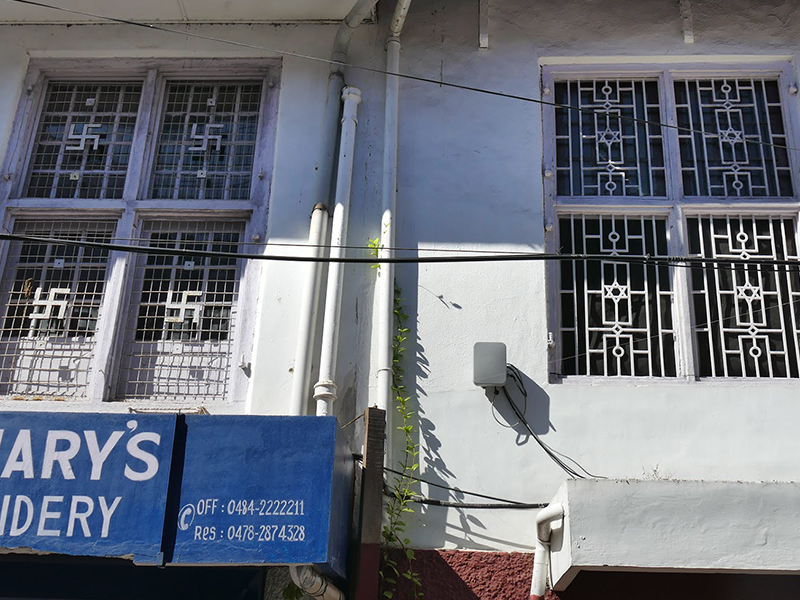
The Good Swastika
|
(RNS) — I just returned from my first trip to India and Nepal, a soul-stretching pilgrimage that was as much mentally as physically demanding.
Along the way, I made my peace with the swastika. Not that swastika, that unrepentant symbol of hate seen most recently on the streets of Charlottesville. No, I’m talking about the original swastika, the ancient Asian swastika, the one you get when you peel away that nasty layer of red and black paint.
I made peace with the “Good Swastika.” There is no better time to explain how than on the days surrounding International Holocaust Remembrance Day (Jan. 27).
Blame it on the incessant, smoky fog of Delhi or Agra’s dizzying smell of incense and dung. Perhaps it’s because I simply fell in love with a people who steadfastly have refused to abandon their sacred symbol to those who defiled it, people who, through their deep faith, have put the hate of the haters to shame. Perhaps it’s a product of enhanced #MeToo sensitivities that I came to appreciate how even a symbol can be abused.
I don’t know, but I did a complete U-turn on this issue, and my making peace with the Good Swastika has helped me on the path to viewing the Holocaust in a more life-enhancing way.

A swastika decorates an entryway in India. Photo courtesy of Rabbi Joshua Hammerman
India overwhelms the senses and reminds of the fragility of life. Every billow of smoke from the funeral pyres on the Ganges reinforces the message that life is transitory, a message also driven home by any rickshaw joyride through the marketplace.
Symbols are transitory too, and their transformations can be disorienting.
Stars of David are plastered all over Muslim mausoleums such as Humayun’s Tomb in Delhi — except that they have nothing to do with Judaism. The Mughals adopted the hexagram as an architectural motif five centuries ago. So did Buddhists, particularly in meditative mandalas. Some versions of “The Tibetan Book of the Dead” even feature hexagrams with swastikas inside. Take that, Adolf!
In India, swastikas are as ubiquitous as samosas. I first saw them at, of all places, Gandhi’s grave in Delhi, in a simple decorative pattern lining a security fence. From that point on, I became acutely sensitive to their presence, which initially caused me to seethe over why the Indian people were being so acutely insensitive to the millions throughout the world whose nightmares have been stoked by that symbol.
Had the Himalayas so shielded them from the impact of the Nazi scourge that they weren’t even aware of it? Gandhi was killed a few years after the Holocaust — so how could this dreaded symbol have been incorporated into a sanctuary for a murdered man of peace?
But then I recalled a time several years back when a bar mitzvah student came to my office with a Pokemon trading card containing a swastika. He asked if it was “kosher” for a Jew to own it. His grandfather, a Holocaust survivor, had been pained considerably at the sight of this card in the hand of his grandchild.
I pulled a book from the shelf and held up the Pokemon card to a photo of a uniformed Hitler “sieg heiling” the troops. My student looked at the two similar symbols and remarked, “the tentacles face the other way.”
It wasn’t a swastika at all next to the Pokeman figures, I told him. It was a “manji,” a Japanese sign of harmony, a symbol whose meaning evokes for the Japanese exactly the opposite of what a swastika connotes to those of us in the West. Doing some quick research on the Internet, I was intrigued by the claim that the Nazis deliberately corrupted this 3,000-year-old emblem, transforming an ancient Asian symbol of life into a European monogram of death.

A swastika decorates a temple in India. Photo courtesy of Rabbi Joshua Hammerman
I suggested to my student that as we become more crowded on this shrinking Earth, there still must be a place to respect the beliefs of the other. But at that time, I wasn’t willing to give the swastika a pass, noting that while we need to recognize the serenity it brings to the Buddhist, Hindu and Jain, so do our Eastern neighbors need to see the pain on the face of my student’s grandfather.
But my recent trip has helped me to accept the Good Swastika on its own terms.
I saw how, in India, this symbol brings a sense of warmth and protection to tiny village huts, similar to the role played by the mezuzah in Jewish homes. I also saw how it conveys a feeling of grace and order in public art, grand squares and vast temples. In Sanskrit, the word connotes well-being; the four arms symbolize sun, wind, water and soil, the basic elements of existence.
I also noted how the symbol appears in assorted colors and variations, but never in the spider-black of the Nazi flag. One could say, with some justification, that it really is not the same symbol that continues to terrify the other half of the planet. For Indians this symbol hasn’t been reclaimed, because they never let it go.
My last stop was the southern port city of Kochi (formerly Cochin), a place noted for the spirit of coexistence that has prevailed for centuries, and the site of an ancient, tiny, Jewish community. One of the synagogues I visited is situated on a hill that also houses a church, a mosque and a Hindu temple. But the most vivid demonstration of coexistence was reserved not for worship spaces, but for two interconnected apartments, side by side in the neighborhood that is called, without a hint of condescension or irony, “Jew Town.”
Right down the street from one of the oldest synagogues in all of Asia, the Hindu swastika and the Jewish Star of David coexist side by side, like the proverbial lion and lamb.

Swastikas cover windows alongside Stars of David in Kochi, India. Photo courtesy of Rabbi Joshua Hammerman
Making peace with the swastika does not mean making peace with Nazis past and present, nor with their hateful ideology — nor with their corrupted version of that symbol. Rather, it is a statement of defiance to those who so grotesquely distorted an emblem held sacred by half the world. We should treat it much like we treat the other cultural artifacts smeared and pilfered by the purveyors of the black spider — the priceless stolen artwork, the desecrated Torah scrolls, and the countless academic books the Nazis incinerated.
By reclaiming the Good Swastika, we can render this Nazi perversion as vaporous as those pyres of textbooks in Berlin or the corpses along the Ganges. Yes, everything is ephemeral, and the Nazi incarnation of evil must never be reincarnated. Perhaps our ability to make peace with the Asian swastika – the Good Swastika – can be our way of showing that there is one true way to escape the endless cycles of hatred and death: with coexistence and love. On International Holocaust Remembrance Day, no message could be more appropriate.
(Rabbi Joshua Hammerman is the spiritual leader of Temple Beth El in Stamford, Conn., and the author of “thelordismyshepherd.com: Seeking God in Cyberspace.” The views expressed in this opinion piece do not necessarily reflect those of Religion News Service.)


